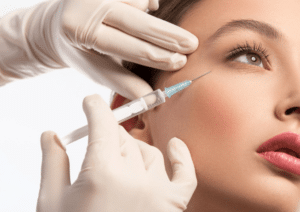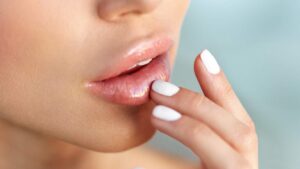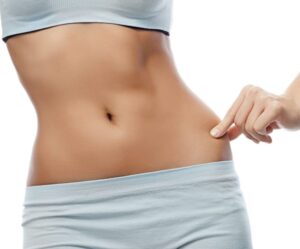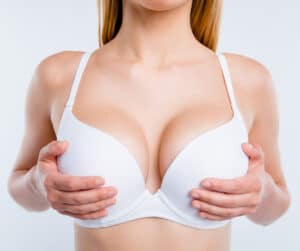Key Takeaways
-
Botox, widely used for both cosmetic and medical purposes as botulinum toxin treatments, can lead to side effects ranging from mild discomfort to more severe health issues such as allergic reactions and botulism; understanding these botulinum toxins’ effects can help in making informed decisions.
-
Identifying a qualified and experienced healthcare provider, such as plastic surgeons, is crucial for minimizing the risk of side effects associated with botulinum toxin treatments, including Botox injections and other botulinum toxins, and avoiding botulism.
-
Being well-informed about the Botox procedure, including what to expect during and after the treatment, can significantly enhance the overall experience and outcome for the patient considering botulinum toxin treatments as cosmetic injections and understanding the medication involved.
-
Proper aftercare following Botox (botulinum toxin treatment) injections is essential for achieving desired results, minimizing potential side effects, and prevention of botulism-related issues.
-
If side effects or adverse events occur, it’s important to contact a healthcare provider immediately to address any complications or symptoms effectively and promptly. This is a critical warning when on medication.
-
Educating oneself about the benefits and risks of Botox, including botulism and adverse effects of toxin effects, as well as following expert advice on aftercare for cosmetic injections, can lead to a safer and more satisfying experience.
Understanding Botox and Its Uses
Nature of Botox
Botox is a neurotoxin derived from Clostridium botulinum. It’s widely known for its cosmetic use, specifically botox treatment through botox injection, to smooth wrinkles on the skin, particularly in the frontalis area. Beyond aesthetics, botox treatment, a medication involving cosmetic injections like botox injection, treats various medical conditions by temporarily paralyzing muscles.
The botox injection works by blocking signals from the brain to the affected muscles, a treatment for botulism symptoms. This medication prevents them from contracting, easing conditions like muscle spasms in patients with botulism.
Type A vs. Type B
Type A and Type B are two main forms of botulinum toxin treatments, used as medication and injection for botulism, a drug therapy. Each targets different issues.
Type A is most popular for reducing facial wrinkles. It relaxes muscles in areas like the frontalis muscle, softening forehead lines and crow’s feet around the eyes for cosmetic use. This drug, a medication, helps people by targeting specific muscles.
Type B medication, a drug derived from botulism, focuses on treating neck spasms and certain neurological disorders in patients. It helps the patient by relaxing tense muscles that cause discomfort or pain, with this medication or drug potentially having side effects.
Non-Surgical Option
Botox, a medication and drug injection, offers a non-surgical solution for both medical and aesthetic improvements, including cosmetic use. It can manage conditions like chronic migraines, excessive sweating, and even teeth grinding by targeting the masseter muscle with medication injections, despite potential drug side effects.
For many, botox injections, a medication and muscle-relaxing drug, provide relief without the need for invasive procedures and with fewer side effects. They appreciate the minimal downtime and quick results in enhancing their appearance or alleviating symptoms, with minimal side effects from the drug, medication, or injection.
Navigating Botox Side Effects
Mild Reactions
Mild side effects often follow Botox injections. Patients typically report side effects such as pain, swelling, and bruising at the injection site of the medication or drug prescribed by their doctor. These reactions, side effects of the medication or drug injection, are temporary, fading within a few days post-treatment.
Headaches also appear as a common side effect. They usually resolve without intervention after 48 hours.

Serious Complications
Serious side effects from Botox, a medication and muscle injection drug, are rare but demand immediate medical attention. Muscle weakness or paralysis in areas not targeted by the treatment can occur as side effects of drug use or injection. This is particularly concerning if it affects breathing or swallowing muscles as side effects of a drug injection, according to the doctor.
Vision problems, including blurred vision as side effects of a drug or injection, should prompt urgent consultation with a doctor or healthcare provider. Such symptoms, possibly side effects from a drug injection, could indicate underlying complications that require swift action by a doctor.
Special Considerations
Pregnant or breastfeeding individuals face specific risks with Botox injection treatments, a drug that may have side effects, and should consult a doctor. The toxin’s effects on unborn or nursing babies remain unclear. Therefore, disclosing pregnancy or breastfeeding status to healthcare providers is crucial before undergoing Botox injections to target muscle side effects, as advised by your doctor.
Allergic reactions, though uncommon, can manifest as rashes, itching, or severe swelling, which are side effects of an injection into the muscle as advised by a doctor. If any signs of an allergic response, such as side effects from a muscle injection, emerge, seeking medical help from a doctor is vital to address these concerns promptly.
Selecting a Healthcare Provider
Credentials Check
Healthcare providers, especially those specializing in cosmetic procedures like Botox injection, must have the right credentials to safely address muscle side effects. Patients should verify their provider’s licensure and expertise in administering Botox injections, considering potential side effects and muscle-related concerns. This step is crucial for minimizing risks of side effects and ensuring safe administration of the injection into the muscle.
Choosing a licensed health care provider with experience in Botox injection treatments for muscle can significantly reduce the chances of experiencing adverse side effects. It’s important to inquire about their training, success rate with similar procedures involving muscle injections, and the side effects.
Medication Discussion
Before undergoing Botox injections, discussing your medical history, current medications, and potential side effects with your healthcare provider is essential. Certain medications, particularly blood thinners and injections, can affect the outcome of the procedure, increase the risk of complications, and lead to side effects.
Patients should be open about all prescription drugs, over-the-counter medication, and supplements they are taking. This transparency helps the provider tailor the injection treatment to avoid adverse reactions and side effects.
Experience Matters
Experience plays a pivotal role in selecting a healthcare provider for Botox injections, considering potential side effects. Ask potential providers about their history with Botox injection treatments, including any complications or side effects they’ve encountered and how they handled them. Providers who have dealt with various cases tend to have more insight into managing different patient needs effectively.
Botox Procedure Insights
Preparation Steps
Patients must prepare carefully before undergoing botox injections. They should avoid certain medications, like aspirin or ibuprofen, to minimize side effects such as bruising at the injection site. Consulting with a healthcare provider ensures a tailored approach to preparation for an injection, including managing potential side effects.
Doctors often recommend stopping blood-thinning supplements as well. This step is crucial for a smoother recovery.
Injection Process
The process involves using a very thin needle for the botox injection treatment, which may have side effects. For precise application, some practitioners may use ultrasound guidance. This ensures the botox injection is injected into the correct muscle groups, minimizing side effects.
The number of injection shots varies depending on the treatment area and potential side effects. Patients typically receive several injections in one session, aiming for a balanced and natural look, while considering the effects and side effects.
Post-Procedure Care
After receiving botox injections, patients should follow specific care instructions to manage any potential side effects. Avoiding rubbing or massaging the injection areas prevents the spread of botox and its side effects to unintended muscles.
Staying upright for a few hours post-injection can also reduce side complications. Patients might notice results within a few days, with full effects visible after two weeks, and side effects may also appear during this period.
Aftercare and Results
Post-Treatment Care
After receiving Botox injections, immediate aftercare is crucial for maximizing the treatment’s effectiveness and minimizing side effects. Patients must avoid rubbing or massaging the treated areas on the side for 24 hours. This precaution prevents the toxin from spreading to unintended muscles on the side.
It’s also advised not to lie down on your side for 2 to 4 hours post-procedure. Such actions ensure the Botox remains localized, optimizing results.
Expected Outcomes
Setting realistic expectations for Botox results is important. Typically, visible improvements appear within a few days on the side, but it can take up to two weeks for full effects to manifest. The duration of Botox’s effectiveness varies, with most patients experiencing results lasting between three to six months on one side.
Follow-up injections on the side may be necessary to maintain desired outcomes. It’s essential to understand that Botox offers temporary relief from wrinkles on the side and does not result in permanent changes.
Safety Precautions
While Botox is generally safe, being aware of potential adverse side events is vital. Clinical trials have shown that side complications are rare when performed by qualified professionals. However, patients should report any unusual side symptoms or reactions promptly.
Certain conditions, like pregnancy, necessitate extra precautions. Always discuss your medical history and any side effects with your provider before undergoing treatment.
Closing Thoughts
Botox offers a promising path to achieving your aesthetic or medical goals, but it’s essential to tread carefully, considering potential side effects. Understanding its uses, side effects, and the importance of choosing the right healthcare provider ensures you’re well-informed before making a decision. Aftercare is crucial for optimal results. Remember, knowledge is power—especially regarding your health and well-being. Choose wisely, stay informed, and prioritize safety to enjoy the benefits Botox can offer without unnecessary risks.
Ready to take the next step? Consult with a certified professional who can provide personalized advice tailored to your needs. Your journey towards better health and confidence starts with a conversation. Make your well-being a priority today.
Frequently Asked Questions
What are common side effects of Botox injections?
Common side effects include temporary redness, swelling at the injection site, bruising, headache, and flu-like symptoms. Most side effects are mild and resolve within a few days.
Can Botox cause long-term health issues?
Long-term health issues from Botox are rare when administered by a qualified healthcare provider. However, improper injection techniques can lead to complications such as muscle weakness or trouble breathing.
How do I choose the right healthcare provider for Botox?
Select a provider with specialized training in facial anatomy and experience in administering Botox. Look for board-certified dermatologists or plastic surgeons with positive reviews and a good track record.
What should I expect during the Botox procedure?
The procedure involves small injections into targeted areas. It’s quick, usually taking about 10-15 minutes, with minimal discomfort. No anesthesia is required, but a topical numbing cream may be applied beforehand.
How long does it take to see results after Botox injections?
Results typically appear within 3 to 7 days after treatment but can take up to two weeks for full effect. The smooth appearance of wrinkles lasts about 3 to 4 months.
Is there any special aftercare needed following Botox injections?
Avoid rubbing or massaging the treated areas for 24 hours to prevent spreading the toxin. Also, stay upright for 4 hours post-treatment and avoid strenuous exercise for 24 hours to ensure optimal results.
Can anyone get Botox injections?
Not everyone is a suitable candidate. Individuals who are pregnant, breastfeeding, or have certain neurological diseases should avoid Botox. Always consult with a healthcare provider to determine if it’s safe for you.











